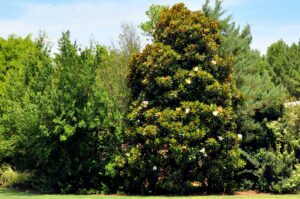March Garden Calendar – NC Mountains
go.ncsu.edu/readext?153991
en Español / em Português
El inglés es el idioma de control de esta página. En la medida en que haya algún conflicto entre la traducción al inglés y la traducción, el inglés prevalece.
Al hacer clic en el enlace de traducción se activa un servicio de traducción gratuito para convertir la página al español. Al igual que con cualquier traducción por Internet, la conversión no es sensible al contexto y puede que no traduzca el texto en su significado original. NC State Extension no garantiza la exactitud del texto traducido. Por favor, tenga en cuenta que algunas aplicaciones y/o servicios pueden no funcionar como se espera cuando se traducen.
Português
Inglês é o idioma de controle desta página. Na medida que haja algum conflito entre o texto original em Inglês e a tradução, o Inglês prevalece.
Ao clicar no link de tradução, um serviço gratuito de tradução será ativado para converter a página para o Português. Como em qualquer tradução pela internet, a conversão não é sensivel ao contexto e pode não ocorrer a tradução para o significado orginal. O serviço de Extensão da Carolina do Norte (NC State Extension) não garante a exatidão do texto traduzido. Por favor, observe que algumas funções ou serviços podem não funcionar como esperado após a tradução.
English
English is the controlling language of this page. To the extent there is any conflict between the English text and the translation, English controls.
Clicking on the translation link activates a free translation service to convert the page to Spanish. As with any Internet translation, the conversion is not context-sensitive and may not translate the text to its original meaning. NC State Extension does not guarantee the accuracy of the translated text. Please note that some applications and/or services may not function as expected when translated.
Collapse ▲- Saucer Magnolia, Bradford Pear, Flowering Cherry, Forsythia, Star Magnolia, Breath-of-Spring (Winter Honeysuckle), Spirea, Flowering Quince, Carolina Jessamine, Periwinkle, Thrift, Violets, Crocus, Daffodil, Hyacinths and Tulips
What to Fertilize
- Fertilize shrubs and important shade trees.
- Fertilize asparagus beds early in March before spear growth begins.
- Farm Ponds should be fertilized starting this month and continuing through October.
- Before planting your vegetables, fertilize your garden as recommended by your soil test results. Apply the recommended amount of lime if this was not done in the fall.
What to Plant
- Plant a tree for Arbor Day! In North Carolina Arbor day is always the first Friday after March 15th.
- Plant your small fruit plants, grape vines and fruit trees before the buds break.
- March is a good month to transplant trees and shrubs.
- New shrubs and ground covers can be planted the entire month of March. Be sure to follow your planting plan.
- Plant seeds of the following perennials: columbine, hollyhock, coreopsis, daisy and phlox. Sweet William can also be planted this month.
- New rose bushes can be planted this month.
- Plants of broccoli, cabbage and cauliflower should be set out in the garden in mid-March.
- The following vegetables can be planted this month: beets, carrots, Chinese cabbage, kale, kohlrabi, lettuce, Swiss chard, turnips, potatoes,cabbage, broccoli, and cauliflower.
- Start any annual flowers or warm-season vegetables inside your home that are not commercially available in early March.
What to Prune
- Finish pruning fruit trees.
- Prune spring flowering plants like breath-of-spring (Winter Honeysuckle) and flowering quince after the flowers fade.
- Prune roses late in March.
- Prune shrubs like abelia, mahonia and nandina this month if needed.
- Pick off faded flowers of pansy and daffodil. Pansies will flower longer if old flowers are removed.
Pest Outlook
- Scout the following landscape shrubs for the following insect pests: euonymus-scale, juniper-spruce spider mites, rhododendron borer, Hemlock Woolly Adelgids in early March. If observed treat with a recommended insecticide.
- Kudzu bugs appear this month.
- Begin organic pest control programs on tree fruits
Lawn Care
- Cool-season lawns may be fertilized with 10-10-10 or turf-type fertilizers if not done in February.
- Apply crabgrass herbicides to your lawn late this month to help control crabgrass in the turf. Wait to apply when Forsythia is in full bloom.
- Mow your tall fescue lawn as needed.
- Seed bare spots in the lawn with tall fescue and bluegrass if not done in September.
Propagation
- Continue to divide perennials like daylily, shasta daisy, purple coneflower and rudbeckia this month.
Specific Chores
- Check all garden equipment, lawn mowers, tillers, hedge trimmers, tools, hoses and sprayers to see if they are in good working order before they are needed.
- Prune away last season’s growth on older perennial plantings, like peony, hollyhock and phlox.





